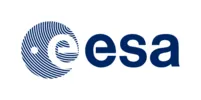Objectives

PROSPECT is a drilling, sampling, sample handling, processing and analysis package under development by the European Space Agency ESA for the Russian Luna-27 mission, scheduled for flight to the lunar south polar region in 2025.
PROSPECT will be operated at the lunar surface in the south polar region of the Moon, where it is required to:
- Extract samples from depths of more than 1 m.
- Extract water, oxygen and other chemicals of interest.
- Identify the chemical species extracted.
- Quantify the abundances of these species.
- Characterize isotopes such that origins and emplacement processes of these species can be established.
For more information see the ESA website on PROSPECT.
Description
The PROSPECT (Platform for Resource Observation and in-Situ Prospecting for Exploration, Commercial exploitation and Transportation) instrument package consists of the drilling and sampling system ProSEED (PROSPECT Sample Excavation and Extraction Drill) to collect samples from below the lunar surface and a sample analysis instrument ProSPA (PROSPECT Sample Processing and Analysis) to investigate thermally extracted volatiles.
The Institute of Astronautics at TUM has been involved in the development of ProSPA in the Phase A study from 2014 to 2015 and the Phase B study from 2016 to 2019. TUM supports the development of the sample ovens that heat the lunar soil sample to extract volatile elements. Several questions regarding heat and mass transfer in the sample, desorption and diffusion of volatiles from the sample, and the overall process of gas extration are adressed, including water extraction and ISRU-like demonstration processes. This involves theoretical analysis and simulation, as well as thermal-vacuum testing and breadboarding in the laboratory. Phase C of PROSPECT has started in late 2019, and will be followed by Phase D and a targeted launch and operation on the lunar surface in 2025.
Consortium
PROSPECT is an ESA project led by the Directorate of Human Spaceflight and Robotic Exploration.
The development of PROSPECT's drill ProSEED is led by Leonardo S.p.A., Italy.
The development of the PROSPECT's chemical laboratory ProSPA is led by the Open University, UK.
As a contributor to ProSPA, TUM is a subcontractor to the Open University, UK.
Publications
Carpenter, J. D. et al. (2014) ‘Accessing and assessing lunar resources with PROSPECT’, Annual Meeting of the Lunar Exploration Analysis Group. Laurel, Maryland.
Fisackerly, R. et al. (2015) ‘Accessing, drilling and operating at the lunar south pole: status of European plans and activities’, 13th Symposium on Advanced Space Technologies in Robotics and Automation. Noordwijk.
Barber, S. J. et al. (2015) ‘ProsPA : a miniature chemical laboratory for in-situ assessment of lunar volatile resources’, European Lunar Symposium.
Barber, S. et al. (2016) ‘ProSPA: the chemical laboratory for in-situ assessment of lunar volatile resources within ESA’s PROSPECT package’, European Lunar Symposium, p. 47.
Barber, S. J. et al. (2017) ‘ProSPA: the science laboratory for the processing and analysis of lunar polar volatiles within PROSPECT’, Lunar and Planetary Science Conference XLVIII, p. 2171.
Barber, S. et al. (2017) ‘PROSPECTing for lunar polar volatiles: the ProSPA miniature in-situ science laboratory’, European Lunar Symposium.
Reiss, P. (2017) ‘Simulation and demonstration of the extraction of water from lunar regolith analogues for the ProSPA sample analysis instrument’, European Lunar Symposium.
Reiss, P. et al. (2017) ‘Implications of sample size for the thermal extraction of volatiles from lunar regolith with the PROSPECT instrument package’, Journal of Aerospace Engineering, 30(3), p. 4016088. doi: 10.1061/(ASCE)AS.1943-5525.0000688.
Barber, S. et al. (2018) ‘ProSPA: analysis of lunar polar volatiles and ISRU demonstration on the Moon’, 49th Lunar and Planetary Science Conference, p. 2172.
Barber, S. et al. (2018) ‘ProSPA: an instrument for lunar polar volatiles prospecting and in situ resource utilization proof of concept’, European Lunar Symposium.
Reiss, P. (2018) ‘A combined model of heat and mass transfer for the in-situ extraction of volatile water from lunar regolith’, Icarus, 306, 1-15. doi: 10.1016/j.icarus.2018.01.020.
Reiss, P. et al. (2018) ‘In-situ hydrogen reduction of lunar polar regolith: from proof of concept experiments with ProSPA to larger scale ISRU demonstrators’, European Lunar Symposium.
Reiss, P., Grill, L. and Barber, S. (2018) ‘Demonstration of volatiles extraction from NU-LHT-2M with the ProSPA instrument breadboard’, European Lunar Symposium.
PROSPECT Science Team
The lrt is an active member of the PROSPECT Science Team, which addresses advanced science questions related to the instrument package.
The Volatiles Preservation Study focused on quantifying the loss of volatiles through various mass transport mechanisms to determine the mass loss between sample collection and closure of the sample ovens. Here, the lrt determined diffusivity through regolith using a new method.
Publications:
- Gscheidle, C. and Grill, L., et al. (2021) Determination of the Knudsen Diffusion Coefficient of Water through NU-LHT-2M using a Fast Pulse Technique, NASA Exporation Science Forum & European Lunar Symposium 2021, Poster Presentation, researchgate
